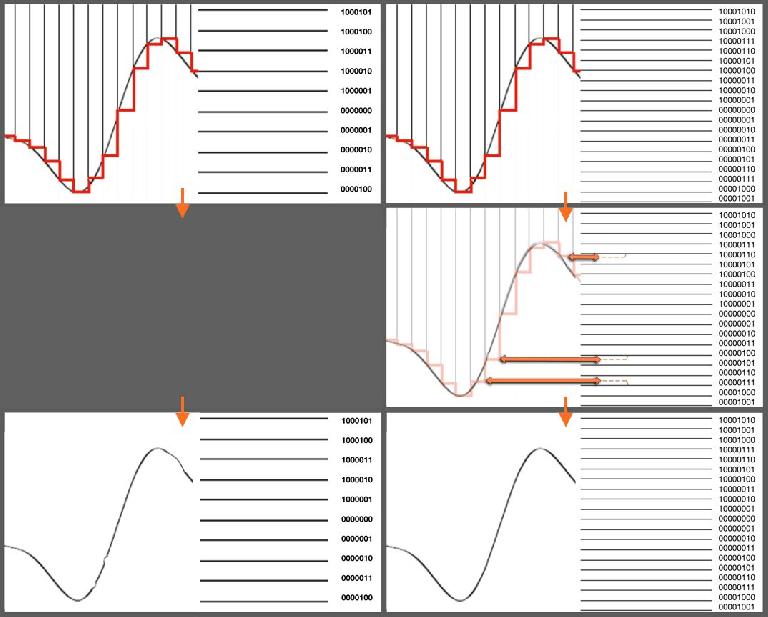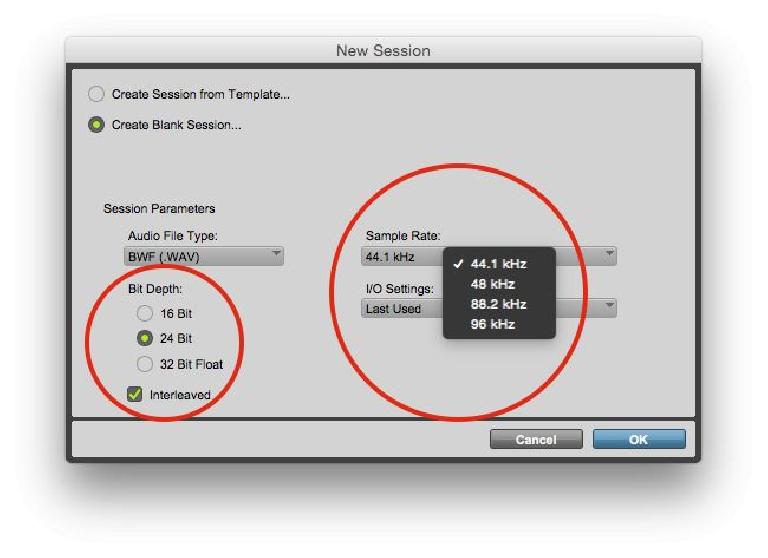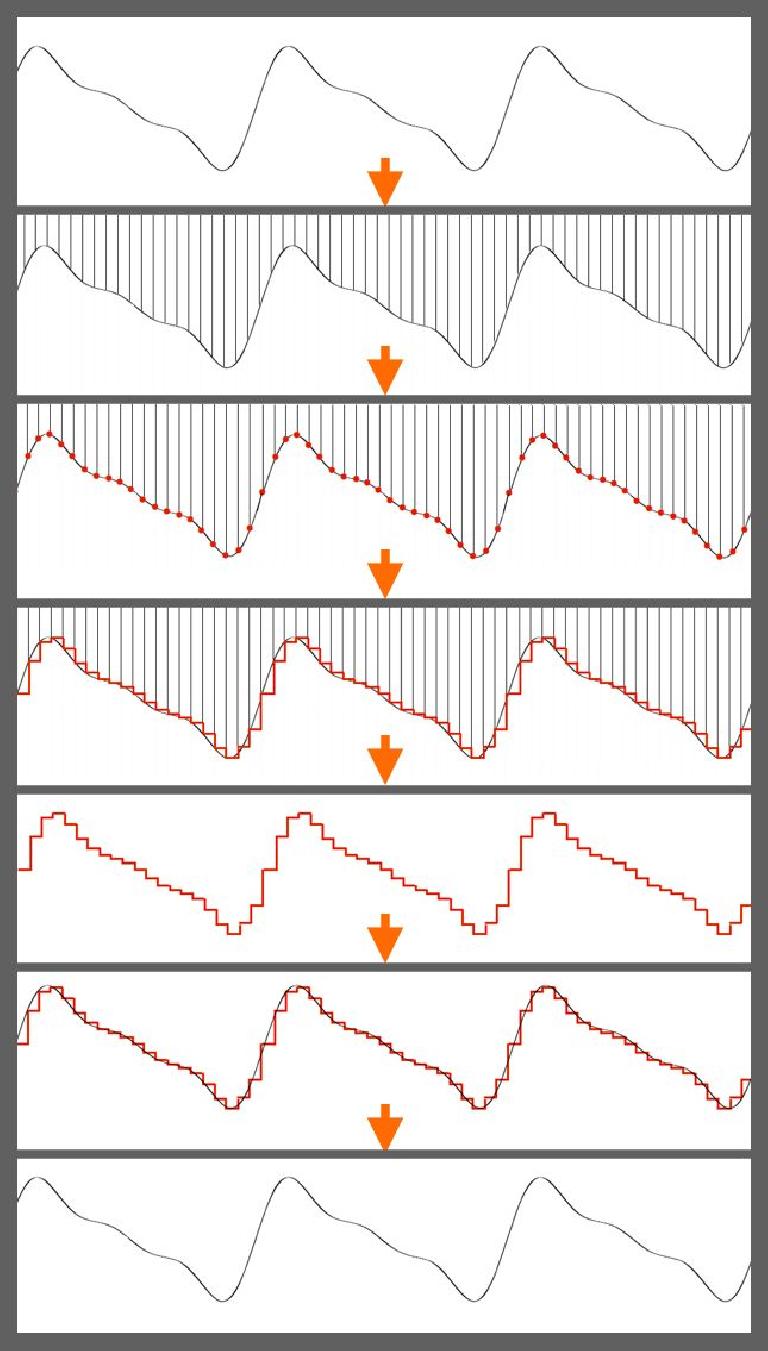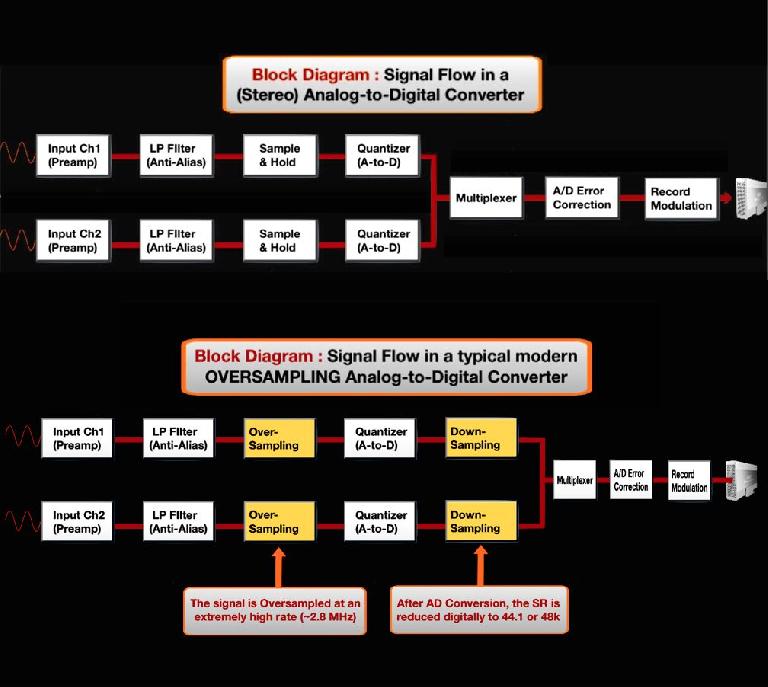Einer der strittigen Debatten in der Audio-Industrie dreht sich um digitale Audioauflösung. Ist CD-Qualität immer noch gut genug, oder sollte alle digitalen Sound zu den höheren-res-Optionen, die jetzt verfügbar sind einzuhalten? Ok, spoiler alert
The (Very Simplified) Basics
Die beiden Benchmarks von digitalen Audio-Qualität sind Abtastrate und Bit Auflösung. Lower Sample Rate
Jahrelang wurden diese beiden Benchmarks standardisiert. CD
Please Sir, May I Have Some More..
Aber wenn der ursprüngliche Standard (e) erfüllt (zumindest wahrnehmbar) die theoretischen Anforderungen, warum die Forderung nach höheren Auflösungen? Ist es wirklich notwendig, um die Verwendung der höheren Bit-Auflösungen verfügbar derzeit machen
A Bit of This, a Bit of That
First off, der einfache Teil
Allerdings ist der Unterschied nicht so groß, wie man erwarten könnte
Und dennoch, alle (zumindest alle Profis) Rekord 24-Bit! Warum? Nun, ich denke, die Antwort ist, warum nicht? 24 Bit Auflösung doesn
Aber was ist mit all dem Trubel in Bezug auf
Sample This
Wenn es um die verfügbaren höheren Abtastraten (88.2, 96, 176.4k, 192k) geht, gibt
Digitaler Audio-Theorie ist eigentlich ganz elegant
Aber, dies ohne ein hörbares Artefakt erreichen
Moderne Digital-Wandler haben, seit Jahren, eigentlich auf einem viel höheren Raten abgetastet, längst wodurch die Notwendigkeit für diesen lästigen Brickwall-Filter. Aber die Sample Rate des resultierenden digitalen Audio-Datei kann immer noch 44.1k oder 48k sein, weil die höheren Audiofrequenzen abgetastet
Aber wenn Sie ein 96k Aufnahme zu machen, können Sie
The Ultrasonic Conundrum
Nun, das ist einer jener Bereiche, wo gute Leute diese
Golden Ears..?
Testmessungen können
Wrap-Up
Letztlich werden die Menschen weiterhin zu verwenden, was sie fühlen, Auflösungen sind angemessen. Obwohl ziemlich alle Pro-Level-Projekte sind 24-Bit, die Abtastraten von der eher traditionellen 44.1k gewählten Bereich und 48k auf 96k, und manchmal sogar 192k (obwohl einige renommierte Ingenieure das Gefühl, dass 192k ist mehr Hype als alles).
Manchmal ist die Wahl für Sie gemacht






 © 2024 Ask.Audio
A NonLinear Educating Company
© 2024 Ask.Audio
A NonLinear Educating Company
Discussion
I have actually only done the first part with most of my (soft) synths and have been surprised how well it sounds with synth sources at at 88..2 in a 44.1 project.
You're right, software instruments are one application where oversampling can potentially make a more noticeable difference—especially with creative applications that involve more extreme sample manipulation, which can sometimes clearly benefit from higher sampling rates. I didn't get into that for two reasons—the article was intended to be focused on playback/distribution more than processing, and it was already long and technical enough (especially before I edited it down!).. ;-)
As I've always understand it, most plug-ins that oversample (for maximum clarity with certain kinds of intensive processing, like some modeling emulations) will be fine doing that internally (if you enable it), regardless of the session settings..
I also didn't get into the whole issue of people listening to all those pristine hi-res audio productions as MP3s/MP4s, but I guess that's an issue for another day.. ;-)
Cheers,
Joe
Want to join the discussion?
Create an account or login to get started!